One of the most profound aspects of the Hindu religion is the recognition and worship of God as feminine. In fact, it’s one of the only major religions in the world to do so. Shakti, or the divine feminine, forms the equal half of Shiv or Ardhnareshwar, perfectly complimenting his masculine energy. None amongst the two is greater. They are both considered equal—and the perfect harmony or balance between the two aspects of creation is what leads to prosperity and peace. The Goddess or Shakti is worshipped and meditated upon on all major Hindu festivals, but some are solely dedicated to her raw and nurturing power—like the auspicious time of Navarātri.
By worshipping both the aspects of the divine, Hindu scriptures also extol the qualities that are both feminine and masculine, and also how they appear in all of us in varying degrees—being one of the only religions in the world to talk about gender fluidity and equality, viewing it as a naturally occurring phenomenon.
MAA SHAKTI IN HINDUISM
Among all the four main deity traditions, Vaishnava, Ganapatva, Shaiva, and Shakta, the feminine divine plays an integral role. The Shakta tradition exclusively worships the feminine divine in the form of Shakti or Divine Mother. Furthermore, since ancient times, female figures have also formed a strong voice in the writing of religious scriptures— something that’s unique to Sanatan Dharma. The Rig Veda contains hymns composed by women such as Lopamudra and Maitreyi.

Sage Gargi appears in the Brihadaranyaka Upanishad where she poses a series of questions to Sage Yajnavalkya on the nature of the soul. Hindu epics such as the Mahabharata and Ramayana depict women in all their vibrancy—in characters such as Draupadi and Sita. Then through the Bhakti tradition, one has heard
of sages and devotees like Mirabai, Soyrabai, Janabai, and Nirmala.
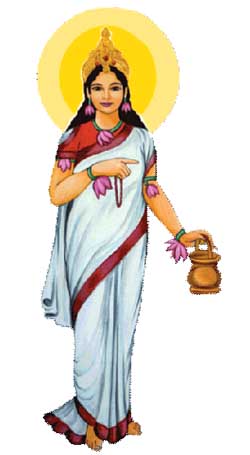
Festivals that celebrate Women Power
Teej, the monsoon fasting festivals for women
Teej is primarily celebrated in the north and and central parts of India and in Nepal as three separate festivals: Haryali Teej, Kajari Teej and Hartalika Teej, each celebrated one month apart. The festivals celebrate the union of the Goddess Parvarti to Lord Shiva, focusing on marital devotion and therefore considered very auspicious and significant for women who are married or engaged to be married. Within families, women engage in ritual fasts and ceremonies and there is much joyful playing, singing and dancing.
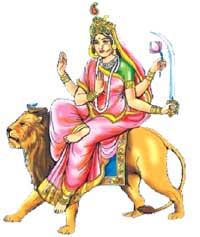
Navrati, the four harvest festivals dedicated to the Mother Goddess
Navratri (or nine nights) come twice a year, during seasonal change—giving us a great time to retract, reset, and rejuvenate. It’s the time for spiritual and physical cleansing, seeking
guidance from the Divine Feminine/ or Maa Shakti, and reaching out to her dual nature of love, compassion, and power and ferocity.
When we talk of Shakti, we refer to the raw, elemental energy of nature, mother earth, and our own—lying dormant sometimes— but true life force of everything inside and around us—nourishing us constantly through an invisible umbilical cord.
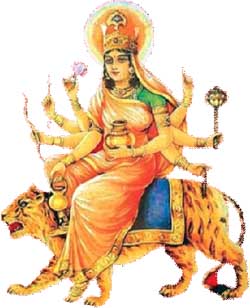
The nine nights are broken up into sets of three, and during each set, a particular aspect of the Divine Mother is meditated upon. The first set of nights is traditionally spent meditating upon the Divine Feminine in her powerful and reconstructive, often mistaken as destructive aspect, known as Durga or Kali.
In the Hindu religion, the Feminine or Shakti is of great spiritual and material significance. We have grown up listening to stories of how the great mighty Shiv is like a “shav” or lifeless without Shakti
We go inwards and reach out to Durga or Kali to eliminate those aspects of ourselves that are causing self-harm.
The second set of nights is spent meditating upon the Divine Mother in her material wealth-giving aspect known as Lakshmi. We ask Maa Lakshmi to help us develop productivity and create a chain of abundance and wellbeing around us.
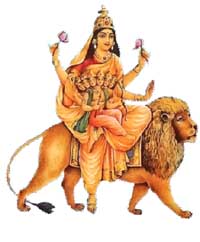
The third set of nights is spent meditating upon the Divine Feminine in her spiritual wisdom-bestowing aspect known as Sarasvati. We ask the goddess to help us achieve self-realisation and understand universal truths such as our divine nature and the interconnectedness of living beings.
The tenth day, Dusshera or Vijay Dashmi, is where Good wins over Evil, and one has hopefully crossed all hurdles to see the light after nine nights of self-evaluation and realisation.

Throughout the year we have various other festivals also wherein women take a major part in celebrations and rituals. In fact, in most festivals, be it Janmashtami, Ganapati Utsav, Diwali, or Raksha Bandhan, women are the focus of ceremonies. During Diwali, women of the house usually clean and renovate the house, cleansing static energy and making way for Goddess Lakshmi or the Goddess of Wealth, on the final day.
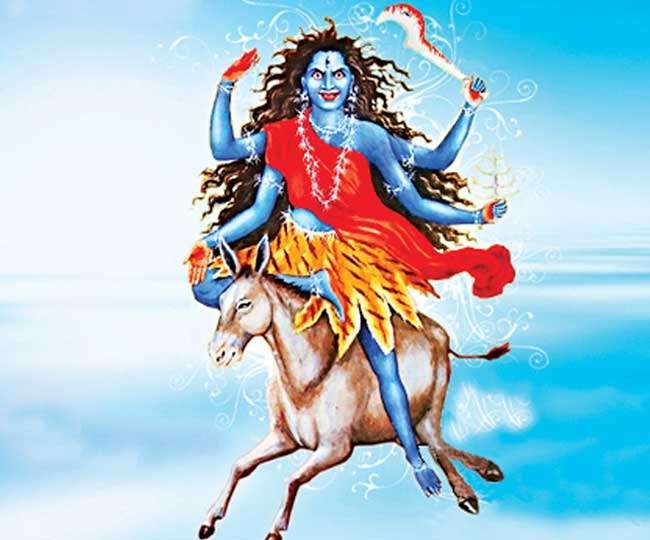
Festivals like Bhai Dooj and Raksha Bandhan celebrate the bond shared between a brother and a sister, giving them both equal importance on the day. All these festivals also focus on the hostess of the house, the Grihini, throughout the celebrations—which brings us to women being pivotal economic points of most festivals in India. Importantly, even the industries that flourish around festival time—the local ecosystems are mostly run by and for women.
Navrati, the four harvest festivals dedicated to the Mother Goddess Navratri (or nine nights) come twice a year, during seasonal change—giving us a great time to retract, reset, and rejuvenate. It’s the time for spiritual and physical cleansing, seeking guidance from the Divine Feminine/ or Maa Shakti, and reaching out to her dual nature of love, compassion, and power and ferocity
In the Hindu religion, the Feminine or Shakti is of great spiritual and material significance. We have grown up listening to stories of how the great mighty Shiv is like a “shav” or lifeless without Shakti.
We also worship God in the form of Ardhnareshwar, who is half feminine and half masculine and a perfect embodiment where the two aspects of Creation come together to form santulan, balance, leading to prosperity and peace.

Hindus also accept all forms of femininity as equally relevant and strong, no matter what their form of expression is. It doesn’t prescribe to a one-size fits all kind of feminism. For example, “ShailPutri” or Daughter Of Mountains is worshipped for her unwavering devotion and commitment to those around her.
“Brahmacharini” is a form of the goddess who performs Tapa or her own spiritual journey, choosing not to get married or attached. As “Kalaratri”—one who does good, she is in her most fierce form of goddess Durga, invoking fear. This form of Goddess is believed to be the destroyer of all negative energies.
The Ninth Avatar is “Siddhidatri”—Giver of Supernatural Power or Sidhis. She is the mistress of all achievement and perfections. Before the manifestation of the universe, when nothing else existed, there was the omnipresent formless divine consciousness. This is also called as static consciousness or “Shiva” in Hindu scriptures.
When the time ripened for the manifestation of the universe, the first to manifest was the dynamic consciousness (shakti) from the static consciousness. Shakti is the feminine power of Shiva and is the creative force behind the universe. Shiva alone, as masculine power, is not capable of creating anything without its feminine power, hence the first to manifest in his own creative feminine power as shakti who was then allowed to create the universe. The Divine Mother which has given birth to the universe also nurtures and sustains it, and has the power to destroy (dissolve back) the same.

As per the Hindu scriptures, Durga in her Kali roop fought demons for nine days and eventually freed Mother Earth from their atrocities. Thus, the 10th day is celebrated as Vijayadashami meaning the day of victory, triumph over bad elements. Navaratri denotes the tremendous potential, power, the feminine aspect of creation has within herself, which also draws down to the power of an ordinary woman.
The woman is the embodiment of the feminine aspect of creation and till she is respected, loved, and treated auspicious for the entire human race she can give joy, peace, and help in the growth of every aspect of creation.
However, when a woman is subjected to cruelty, violence, atrocity and made to suffer then she can become fierce and terrifying like Chandi and destroy those cruel forces.
All these festivals are reminders of feminine power in the universe and also provide the perfect opportunity to offer gratitude, by acknowledging the contribution of women in creation, peace, and spirituality.



















Comments